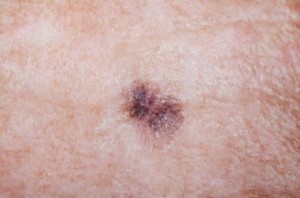Skin Cancer
 Skin cancer, which is the most common form of cancer in the United States, is the result of the abnormal growth of skin cells. Cancer can affect skin anywhere on your body, but most frequently appears on skin that is exposed to the sun. Although it can usually be treated successfully, some cases are life-threatening, so it is essential for people to be proactive in caring for their skin and that of their children. Early detection is the most important element of effective treatment.
Skin cancer, which is the most common form of cancer in the United States, is the result of the abnormal growth of skin cells. Cancer can affect skin anywhere on your body, but most frequently appears on skin that is exposed to the sun. Although it can usually be treated successfully, some cases are life-threatening, so it is essential for people to be proactive in caring for their skin and that of their children. Early detection is the most important element of effective treatment.
Types of Skin Cancer
There are three major types of skin cancer; each affects a different layer of skin, and each derives its name from the kind of skin cell affected.
Basal Cell Carcinoma
Basal cell carcinoma is the most common type of skin cancer. It commonly occurs on skin that has been exposed to the sun, and rarely spreads.
Squamous Cell Carcinoma
Squamous cell carcinoma is the most common type of skin cancer in people with dark skin, who typically get it in places that have not been exposed to the sun. In fair-skinned people, however, it usually occurs in sun-exposed areas. Squamous cell skin cancer can metastasize to other parts of the body, so prompt treatment is essential.
Melanoma
Melanoma is the most aggressive type of skin cancer, and the most likely to metastasize. It forms in the melanocytes (cells that contain pigment), and can develop anywhere on the body, regardless of past exposure to sun.
A common type of precancer, actinic (solar) keratosis typically appears as a scaly or crusty bump on the skin's surface. It is usually treated with cryotherapy to prevent it from becoming malignant.
Causes of Skin Cancer
Skin cells are constantly replenishing themselves during a process controlled by DNA. When DNA is damaged, often from ultraviolet radiation, the process is corrupted, and abnormal tissue, which can turn malignant, forms.
Some skin cancer, particularly melanoma, affects areas of the skin that have not been exposed to the sun. Other factors that increase the risk for developing skin cancer include the following:
- Fair complexion
- Presence of moles
- Weakened immune system
- Heredity
- Smoking
- Age
While there may be a hereditary tendency to other types of skin cancer, melanoma is the type most closely associated with hereditary factors.
Symptoms of Skin Cancer
Skin cancer is often identified as a new lesion on the skin, or a preexisting growth that noticeably changes. Skin cancer can appear anywhere on the body, but common locations include the following:
- Scalp
- Face (lips, nose, cheek)
- Neck or chest
- Arms, legs and hands
Patients should be alert for the appearance of any of the following:
- Pearly or waxy bump
- Flesh-colored or brown scar-like lesion
- Firm, red nodule
- Crusted, flat lesion
- Large brown spot with darker speckles
- Shiny, firm bumps
Anyone who notices any of these skin abnormalities, or whose moles change color or shape, should consult a dermatologist promptly.
Diagnosis of Skin Cancer
To diagnose skin cancer, the skin is checked for abnormal growths or patches. If a malignancy is suspected, a biopsy is immediately performed. Results of the biopsy will show whether there is malignant tissue present, and, if so, what type.
Treatment for Skin Cancer
Treatment for skin cancer depends on the type, size and location of the tumor. Most options involve removing the entire growth. Removal procedures are usually simple, requiring only a local anesthetic in an outpatient setting. On occasion, depending on the size and location of the growth being removed, a skin graft from another region of the body may be required. Treatments for skin cancer include the following:
- Cryotherapy (freezing with liquid nitrogen)
- Excision
- Laser therapy
- Mohs surgery
Depending on the stage and severity of the skin cancer, in addition to excision of the growth, chemotherapy or radiation may be needed. When chemotherapy is an option for treating superficial skin cancers, topical treatment, rather than infusion, may be possible.
Prevention of Skin Cancer
Although not every case of skin cancer can be prevented, the best way to avoid it is to protect skin from ultraviolet rays:
Although not every case of skin cancer can be prevented, the best way to avoid it is to protect skin from ultraviolet rays:
- Limit sun exposure, especially between 10 a.m. and 4 p.m.
- Always wear sunscreen with an SPF of 15 or higher, even on cloudy days
- Reapply sunscreen at 2-hour intervals
- Wear a hat in the sun
- Wear long sleeves and long pants whenever possible
- Avoid tanning beds
- Be aware of medications that increase sun sensitivity
Performing routine self-exams to spot skin changes, and seeing a dermatologist for a full-body screening on a regular basis, are also very important methods of thwarting skin cancer.
